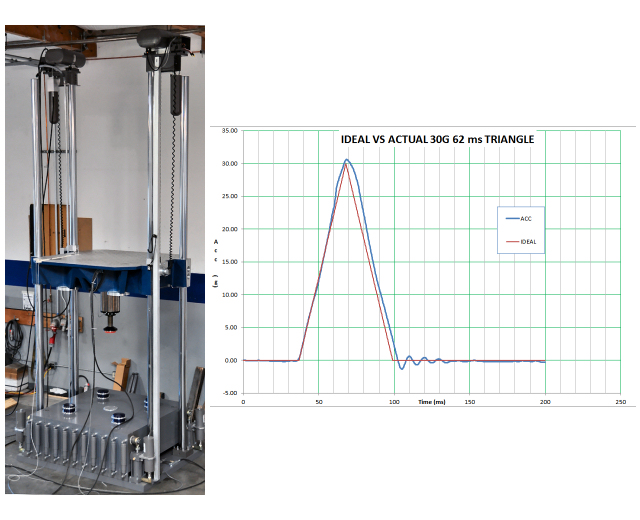Half Sine, Trapezoidal, Sawtooth….ISOSCELES?
SAE has an Aerospace Standard that governs seat designs for civil rotorcraft, transport aircraft, and general aviation aircraft. Like most product performance standards, SAE AS8049 Revision A specifies dynamic shock test levels to evaluate the product’s structural integrity.
What makes this specification unique is the shock pulse waveform that it requires for these tests—an isosceles triangle pulse.

Isosceles triangle pulse shape is not a commonly specified waveform. We designed a new programmer so our customers could perform isosceles triangle shock pulses per SAE 8049.
The new shock pulse programmer design is a customized version of our Opposing Force Gas Programmer (OFGP). By designing an OFGP with a non-linear spring rate, the programmer generates a long duration triangular pulse shape during impact instead of a long duration half sine pulse.
The unique waveform is not the only design challenge Lansmont faced to comply with this specification. The shock levels referenced in this specification are intended to replicate crash events.
Translation: it takes a tall shock system—roughly 20 feet tall—to generate the impact velocity needed for these tests. The test specimen (aircraft seats and test fixture) is large and bulky so the shock system will need a large table surface and payload capacity.
A custom height version of our Model 152 Shock System is the ideal testing platform that accommodates both the size and performance requirements.

Above-right: data from the actual shock machine — 30 g, 62 msec triangular shock waveform.